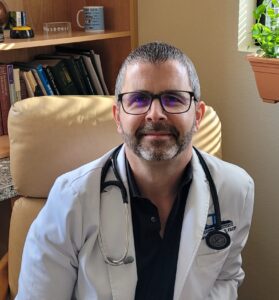FREE Public Health Forum to discuss topics facing healthcare providers in Pima County Pima County…
PCMS Member Corner: Burnout, Labor Shortages in Healthcare
What to do about Burnout and Labor Shortages in Healthcare
 Everyone working in medicine today understands the added pressures we are under and how much more difficult a profession healthcare has become. It feels like practitioners are always fighting something: the computer, the insurance company, the administration, or the noncompliant patient.
Everyone working in medicine today understands the added pressures we are under and how much more difficult a profession healthcare has become. It feels like practitioners are always fighting something: the computer, the insurance company, the administration, or the noncompliant patient.
We need an influx of new physicians to join our ranks, take up the mantles of retiring physicians, and ensure high-quality, empathetic care for the people of Southern Arizona. In Arizona, there are some reasons to be optimistic. For example, we now have 5 medical schools (up from 1 during my residency) training students who will hopefully practice medicine in Arizona.
However, while learning the practice of medicine from their attendings, students are also witnessing the problems.
Elsevier Health just published an interesting report titled “Clinicians of the Future 2023 Education Edition” which offers some sobering insights into the next generation of physicians and nurses. They surveyed 2200 students from 91 countries with a focus on students from the USA and UK.
60% of the students surveyed already are worried about burnout and how labor force shortages will affect them. 25% of medical students in the USA are considering quitting. Globally, 54% of medical students see medical school as a stepping-stone toward a career that will not involve patient care, such as business consulting.
What is the solution? To many administrators, it seems the answer is more pizza parties or maybe a new slogan. Or perhaps encourage students to take up yoga or meditation so they can “manage” the burnout of a demanding career combined with raising a family or caring for aging parents. Another option is to saddle medical students with so much debt that they *must* work as physicians rather than switching careers. This brings to mind the Soviet army conscripts in WW2 being forced to the front by officers with guns trained upon the conscripts.
A better option would be to improve working conditions for clinicians and ensure we have the tools to effectively do our jobs. That way, when students are in their clinical rotations, they see a satisfied and dedicated workforce that can focus on taking care of the patients.
This will only happen with input from working physicians like the ones in the Pima County Medical Society and other physician-led organizations. This year we have met with the offices of multiple lawmakers in an effort to raise awareness and offer potential solutions for the problems we all face. Thank you for your support.
Written by Dr. Roy Loewenstein
November 2023
